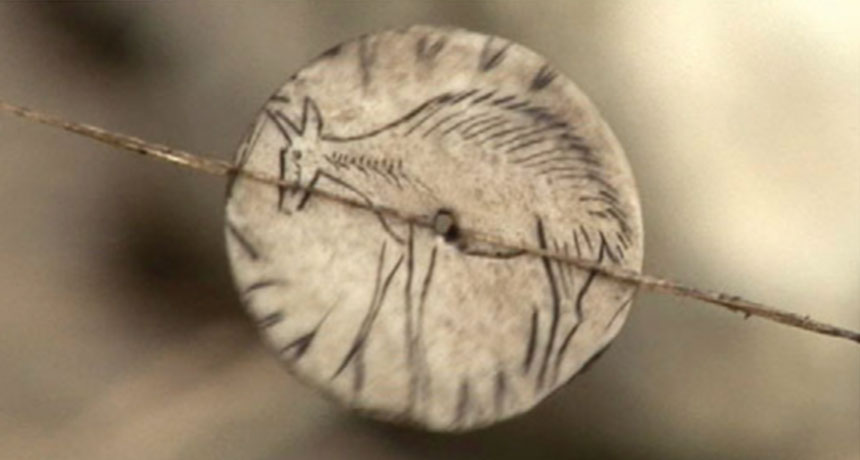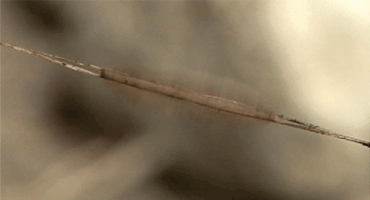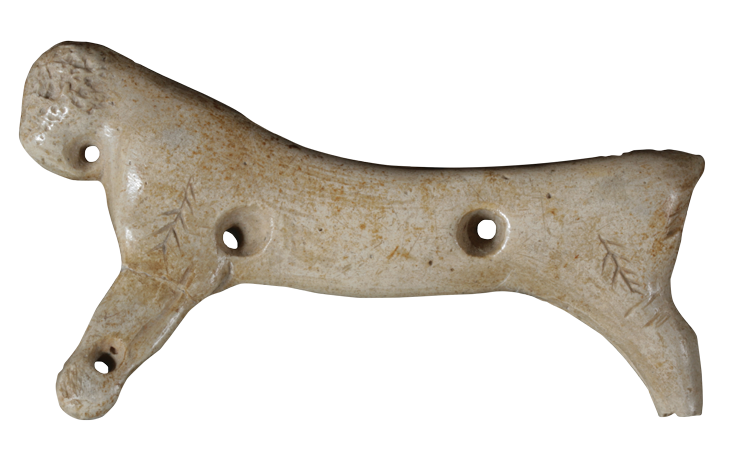Ancient kids’ toys have been hiding in the archaeological record

A SPIN ON PLAY An ancient spinning disk (reconstruction shown) found in what's now southwestern France may have been a children's toy.
St-Germain-en-Laye
Youngsters have probably been playing their way into cultural competence for at least tens of thousands of years. So why are signs of children largely absent from the archaeological record?
A cartoon that Biblical scholar Kristine Garroway taped up in her college dorm helps to explain kids’ invisibility at ancient sites: Two men in business suits stare intently at an unidentifiable round object sitting on a table. “Hey, what’s this?” asks the first guy. “I dunno, probably a toy … or a religious object,” says the second.
Archaeologists have long tended to choose the second option, says Garroway, now a visiting scientist at Hebrew Union College–Jewish Institute of Religion in Los Angeles. Ambiguous finds, such as miniature pottery vessels and small figurines, get classified as ritual or decorative objects. Some of these artifacts undoubtedly were used in ceremonies. But not all of them, Garroway argues.

Unusual finds in Israel dating to around 3,000 years ago also represent children’s early attempts to mimic adult craftwork, Garroway said in a November 18 presentation in Boston at the annual meeting of the American Schools of Oriental Research. Numerous rounded clay disks, each pierced with two holes, have mystified investigators for nearly a century. As early as 1928, an archaeologist suggested that these button-sized objects were toys.
After passing a string through both of a disk’s holes and tying the ends together, a youngster could swing the string to wind up the toy and then pull both ends of the string to make the disk spin. Clay disks from six Israeli sites can be separated into those made by skilled artisans and others — featuring rough edges and unevenly spaced holes — made by novices, including children, Garroway proposes. If those items were toys, sloppy execution may have partly resulted from children’s impatience to play with the final product, she suspects.
Garroway’s proposal appears likely, especially in light of evidence that more than 10,000 years earlier, people in France and Spain made similar spinning disks decorated with animals that appeared to move as the toy twirled (SN: 6/30/12, p. 12), says archaeologist Michelle Langley of Griffith University in Brisbane, Australia.
Western European finds from as early as 14,000 to 21,000 years ago also may have gone unrecognized as children’s toys, Langley suggests in a paper published this month in the Oxford Journal of Archaeology. One specimen, a cave lion carved out of a reindeer’s antler, displays so much polish from handling that children may have played with the item for years, she says. Some bone spearpoints with broken tips bear signs of unskilled repair, suggesting adults gave the damaged weapons to children to practice bone-working skills and perhaps play with, she adds.








